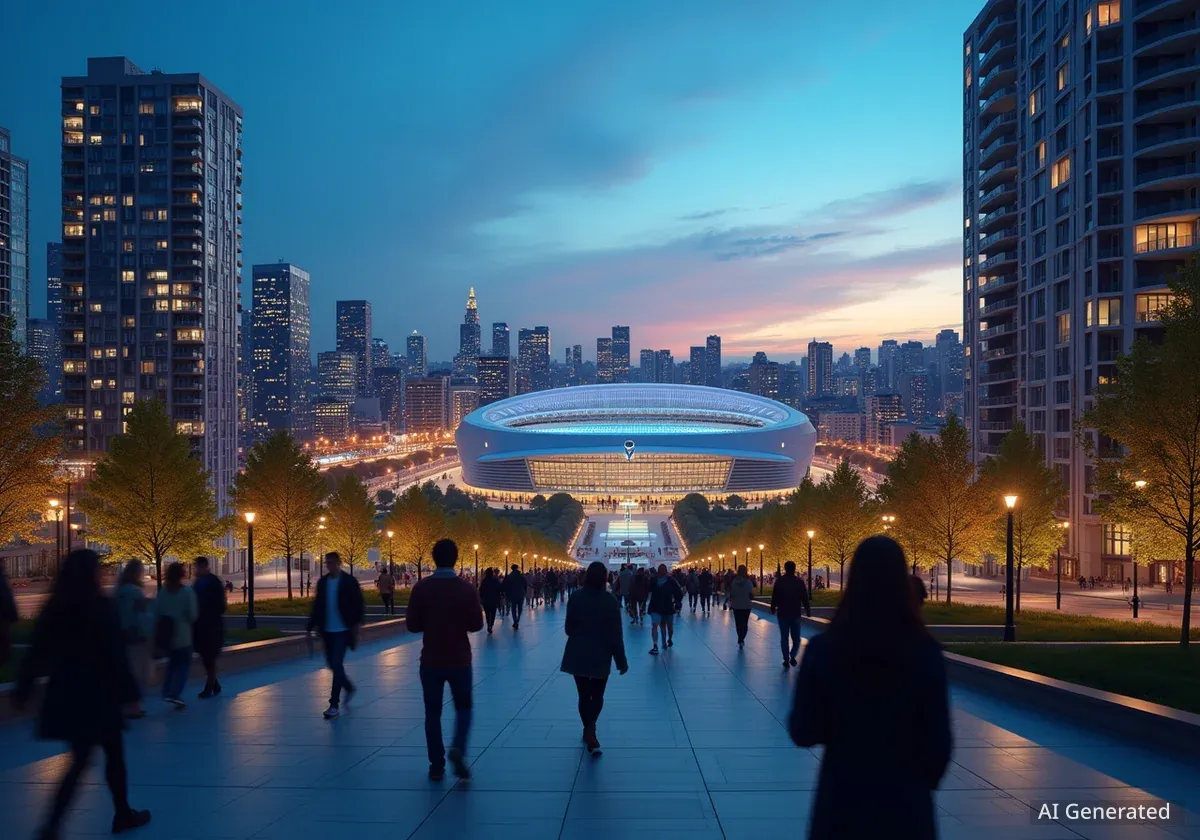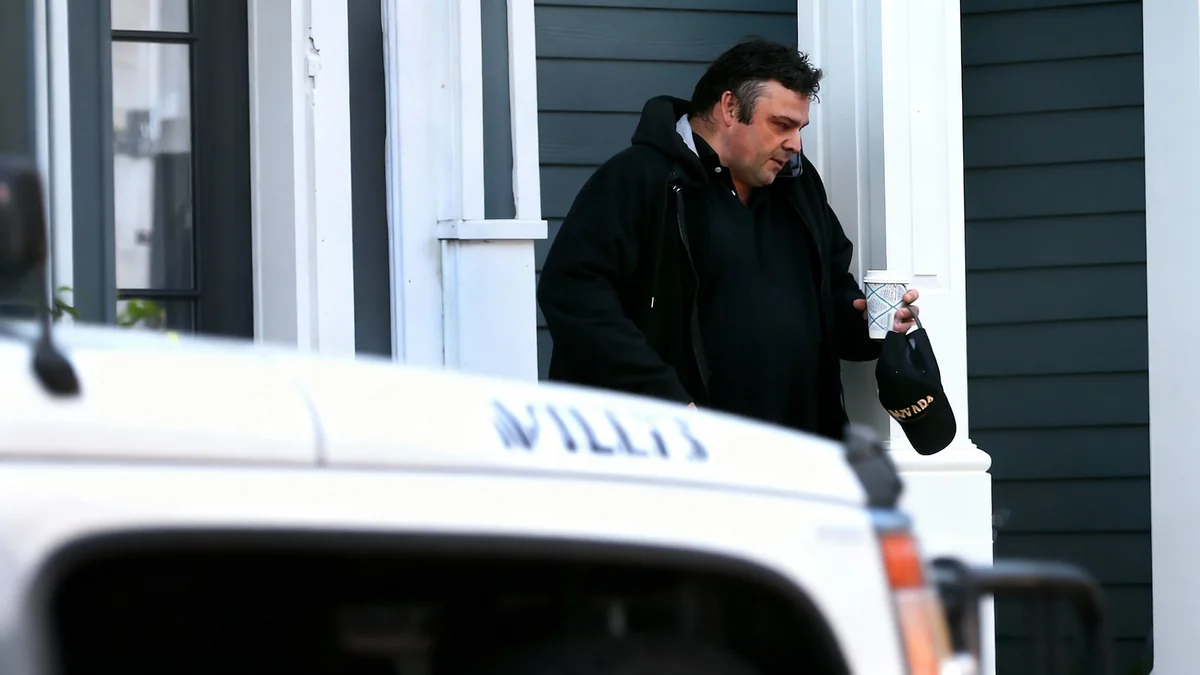Denver is pioneering a major shift in urban planning, transforming the areas around its professional sports venues from vast parking lots into vibrant, year-round neighborhoods. This strategy, known as creating Sports-Anchored Mixed-Use Districts (SMDs), aims to generate continuous economic activity and build new communities around the city's beloved teams.
The first completed example of this vision is McGregor Square, a $262 million development adjacent to Coors Field. Now, several more ambitious projects are underway, promising to redefine the relationship between sports franchises and the urban fabric of the Mile High City.
Key Takeaways
- Denver is actively developing Sports-Anchored Mixed-Use Districts (SMDs) to create year-round destinations around its sports venues.
- Completed projects like McGregor Square have set a precedent, blending residential, commercial, and hotel spaces.
- Major new developments are planned for Ball Arena, a new women's soccer stadium, and a potential new Denver Broncos stadium at Burnham Yard.
- These projects involve significant private and public investment, aiming to address housing needs and improve urban infrastructure.
A New Era for Urban Sports Venues
For decades, sports stadiums in many American cities were seen as destinations for game days only, surrounded by seas of asphalt that sat empty most of the year. Denver is now at the forefront of a movement to change that narrative. The city is leveraging its popular sports franchises to anchor large-scale real estate developments that serve residents and visitors 365 days a year.
The concept is to build high-density, integrated communities where people can live, work, shop, and find entertainment, all centered around a major sports facility. This approach not only enhances the fan experience but also creates a more dynamic and economically resilient urban core.
The McGregor Square Model
Completed in 2021, McGregor Square stands as a tangible proof of concept. Located next to the home of the Colorado Rockies, this development replaced a surface parking lot with a bustling complex.
McGregor Square by the Numbers
- Total Cost: $262 million
- Condominiums: 103 units
- Hotel: The 176-room Rally Hotel
- Commercial Space: 270,000 square feet for retail, restaurants, and offices
This project demonstrates how a sports-adjacent area can become a lively neighborhood in its own right, attracting activity well beyond the 81 home games of the baseball season.
Expanding the Vision Across Denver
With the success of McGregor Square, the city and its sports organizations are planning even larger and more integrated districts. These projects are set to reshape significant portions of Denver's landscape over the next decade.
Ball Arena's Transformation
Long-term redevelopment plans for Ball Arena, home to the Denver Nuggets and Colorado Avalanche, are particularly ambitious. The vision is to convert the surrounding parking lots into a new residential neighborhood.
The proposal includes the construction of up to 6,000 housing units. This development is part of a long-term commitment that will keep both the Nuggets and Avalanche organizations in Denver through at least 2050, solidifying their role as cornerstones of the downtown area.
A Dedicated Home for Women's Soccer
The city's new National Women’s Soccer League (NWSL) expansion team, Denver Summit FC, is also part of this trend. The ownership group was committed to building a dedicated, women's soccer-specific stadium in an accessible urban location, ultimately selecting the Santa Fe Yards site.
Public-Private Partnership
The financing for the new NWSL stadium illustrates the collaborative nature of these projects. While the ownership group is funding the $150 million stadium structure, the city of Denver is contributing $50 million for land acquisition and another $20 million for infrastructure improvements like roads, parks, and trails in the surrounding area.
This investment aims to ensure the new stadium is not an isolated structure but a well-integrated part of a revitalized neighborhood.
The Burnham Yard Super-Project
Perhaps the most transformative project on the horizon is the development of Burnham Yard. The Walton-Penner Family Ownership Group, owners of the Denver Broncos, have identified the historic 58-acre railyard as their preferred site for a new, privately funded stadium with a retractable roof.
However, the stadium is just one piece of a much larger plan. It is intended to anchor a vast mixed-use community hub that will span over 100 acres. This development is envisioned as a new city neighborhood, with a target completion date for the stadium around 2031.
The scale of the Burnham Yard project represents the ultimate evolution of the SMD concept, moving from a single development to creating an entire district from the ground up.
The Complexities of Building City Hubs
Executing these large-scale endeavors requires immense collaboration, careful planning, and a tolerance for risk. Experts involved in these projects emphasize that they are long-term commitments that cannot be rushed.
"Sports and entertainment district real estate projects are not for the weak of heart. There is no option for error. You have to get it right, especially from a culture and fandom aspect."Jessica Ostermick, Colorado Market Leader for CBRE
Creating safe, inviting, and authentic neighborhoods is a primary goal. This involves engaging with the community from the earliest stages and ensuring the final product reflects the city's character.
Andrea Austin, a shareholder at the law firm Greenberg Traurig, notes the importance of a diverse team. "To be successful, you need to have a good municipal understanding. You also need to accept that you don’t know everything and must bring in experts to fill in gaps," she said.
These projects require a blend of expertise in real estate, finance, urban planning, law, and architecture. According to Lyndsey Archer, founder of Studio Archer, success depends on "problem solvers, pioneers and creative, outside-the-box thinkers to tackle problems that have never been solved before."
A Win for the City and Its Future
As Denver moves forward with these ambitious plans, the city is preparing for a future where its sports venues are more than just places to watch a game. They are becoming the hearts of new, dynamic communities.
This strategy addresses several urban challenges simultaneously: it creates new housing, generates sustained economic revenue, improves underutilized land, and enhances public infrastructure. For residents, it promises new places to live and gather, while for fans, it offers a more immersive and engaging experience.
By weaving its sports culture directly into its urban development, Denver is not just building stadiums; it is building neighborhoods for the future, ensuring a win for the city, its communities, and its professional workforce.





